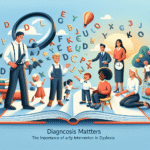
Introduction
Do you ever wonder why some relationships seem to flow effortlessly while others feel fraught with conflict? The answer often lies in the patterns of attachment we formed during childhood. Understanding Secure vs. Insecure Attachment: How Your History Affects Your Present Relationships can illuminate not only your relationship dynamics but also provide a pathway for healing and growth. This article will delve deeply into the intricate world of attachment styles, offering insights that can enhance your emotional well-being and relationships with others.
The Foundation of Attachment Theory
Attachment theory, developed by psychologist John Bowlby, posits that the bonds formed between infants and their caregivers significantly impact their emotional and relational outcomes later in life. Maria Ainsworth later expanded upon Bowlby’s work with her renowned "Strange Situation" experiment, identifying three primary attachment styles: secure, anxious, and avoidant. Let’s explore these styles in detail.
The Four Attachment Styles
Secure Attachment
Individuals with a secure attachment style generally have positive views of themselves and others. They are comfortable with intimacy and independence, establishing a healthy balance in their relationships.Anxious Attachment
Those with anxious attachment often crave closeness and reassurance but may fear abandonment. Their insecurity can lead to clingy behavior, causing strain in relationships.Avoidant Attachment
Avoidant individuals typically distance themselves from emotional intimacy. They value independence and may become uncomfortable with closeness, often leading to a cycle of emotional isolation.- Disorganized Attachment
A combination of anxious and avoidant behaviors, disorganized attachment arises from trauma or inconsistent caregiving. These individuals may struggle with forming stable relationships.
Secure vs. Insecure Attachment: The Key Differences
The variations between secure and insecure attachment significantly affect how individuals navigate relationships. Here’s a comparative table highlighting these differences:
| Aspect | Secure Attachment | Insecure Attachment |
|---|---|---|
| Self-Image | Positive | Often negative |
| View of Others | Trusting | Distrustful or fearful |
| Emotional Expression | Open and honest | Guarded or overwhelming |
| Handling Conflict | Calm and constructive | Anxious, avoidant, or aggressive |
| Relationship Goals | Healthy intimacy and independence | Fear of abandonment or neglect |
How Secure vs. Insecure Attachment Affects Adult Relationships
Understanding your attachment style is essential for personal growth and relationship satisfaction. Here’s how secure and insecure attachment styles manifest in adult relationships:
Securely Attached Individuals
Those with secure attachment tend to experience:
- Healthier Relationships: They cultivate intimacy and trust, allowing for open communication.
- Better Conflict Resolution: They handle disagreements constructively, valuing each other’s perspectives.
- Emotional Dependency: They can rely on their partners without losing their independence.
Case Study: The Power Couple
Jack and Lisa, both securely attached, navigate relationship challenges with respect and empathy. Their growth-oriented mindset allows them to support one another, creating a lasting bond.
Insecurely Attached Individuals
In contrast, individuals with insecure attachment face more challenges:
- Fear of Rejection: Anxious individuals might perceive threats where none exist, leading to conflict.
- Avoidance of Intimacy: Those with avoidant attachment may shy away from deep connections, missing opportunities for growth.
- Emotional Instability: Disorganized individuals often find themselves in chaotic relationships, struggling to balance emotional needs.
Case Study: The Rollercoaster Relationship
Sarah, who has an anxious attachment style, often fears her partner will leave her. This fear leads her to overreact to minor conflicts, driving her partner further away and creating a cyclical pattern of distress.
Healing from Insecure Attachment Styles
The great news is that attachment styles can evolve. Here are practical steps for individuals seeking to transition from insecure to secure attachment:
Self-Reflection
Engage in mindful practices that allow you to identify your fears and triggers, helping you understand your emotional responses.Seek Therapy
Consider individual or couple’s therapy. A qualified therapist can help you unravel past experiences and build healthier coping strategies.Practice Vulnerability
Open up to trusted friends or partners about your feelings. Sharing your internal world fosters deeper connections and builds trust.- Set Healthy Boundaries
Ensure that you communicate your emotional needs and limits, creating a safe space for both you and your partner to thrive.
The Role of Communication
Effective communication is crucial in fostering a secure attachment. Research indicates that individuals with secure attachment styles engage in healthier communication patterns. Here are key strategies to improve communication:
Active Listening
Make it a priority to truly hear what your partner is expressing. Avoid formulating a response while they speak.Use ‘I’ Statements
Frame your feelings with statements like “I feel” instead of placing blame, which encourages open dialogue.- Check-In Regularly
Establish routine emotional check-ins to keep communication flowing and address concerns proactively.
Conclusion: Embracing Your Attachment Journey
Understanding Secure vs. Insecure Attachment: How Your History Affects Your Present Relationships can empower you to reshape your emotional landscape. Whether you identify as securely attached or are grappling with the challenges of an insecure attachment style, it’s crucial to recognize that growth is possible.
By nurturing self-awareness, seeking support, and practicing open communication, you can transform your relationships. Remember, the journey to secure attachment not only improves your romantic life but enhances all interpersonal relationships—friendships, family ties, and workplace dynamics.
FAQs
1. Can attachment styles change over time?
Absolutely! Awareness, therapy, and healthy relationship experiences can help shift one’s attachment style towards security.
2. How do I know my attachment style?
Self-reflection, journaling, or taking validated online quizzes can help you identify your patterns and behaviors related to attachment.
3. Can insecure attachment affect my parenting?
Yes, your attachment style might influence your parenting approach, but awareness allows for conscious efforts to foster secure attachments with your children.
4. What if my partner has a different attachment style?
Different attachment styles can complement each other, but open communication and understanding are vital for the relationship to thrive.
5. Where can I seek help for attachment-related issues?
Therapists specializing in attachment-based therapy or relationship counseling can provide guided strategies for healing and growth.
In summary, exploring how attachment styles interact within your relationships can unlock the door to deeper intimacy, healthier communication, and lasting happiness. Understanding these dynamics is not merely an academic exercise, but a personal journey towards realizing your full relational potential.

















